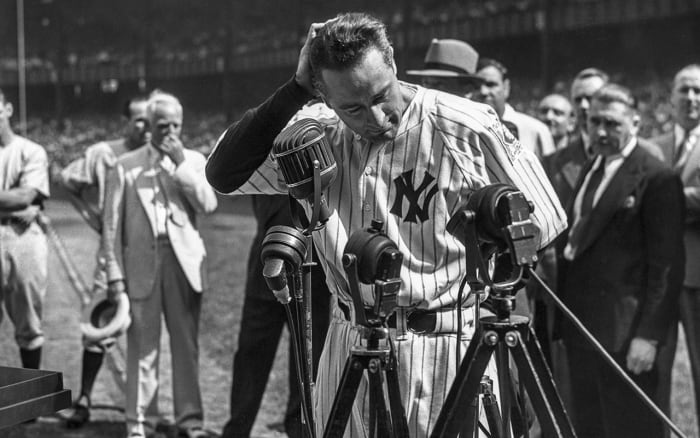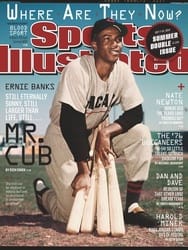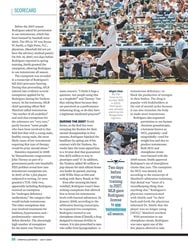The Legacy Of Lou
Seventy-five years ago this week, Lou Gehrig delivered one of the most famous lines of sports poetry. "Today," he told the crowd at Yankee Stadium as he bade farewell to baseball on July 4, 1939, "I consider myself the luckiest man on the face of the earth." Two years later Gehrig died from amyotrophic lateral sclerosis, leaving behind his famous speech, an iconic streak, an Oscar-winning movie (Pride of the Yankees) and a disease that, like Gehrig himself, has proved to be an Iron Horse.
Gehrig's goodbye remains a sad interlude in the story baseball tells about itself, wedged between the 1919 Black Sox scandal and Jackie Robinson breaking the color barrier in '47. Unlike those stories, though, Gehrig's has no moral. A good man faced death with dignity and grace, but ALS won. It always does.
Maybe the best way to think about ALS is to picture your favorite athletes and take away the physical traits that make them special. Then take away what makes them average. Then take away what keeps them alive. As Lucie Bruijn, chief scientist of the ALS Association, says, the disease rips apart "a connection of the muscles, the nerve cells in the brain and the spinal cord." As many as 30,000 Americans have ALS right now. There is no cure.
Every once in a while, ALS claims a famous name. In 1975 the disease killed boxer Ezzard Charles; in 1983, actor David Niven. In September 1998, ALS hit another beloved Yankee, pitcher Catfish Hunter. Fans sent Hunter "cures" in the mail, and in March 1999, Hunter said, "They'll find a cure someday, and I just hope I'm still here when they find it." He died six months later. Without medicine to save them, some victims have tried humor. Writer Dudley Clendinen called ALS "Lou" after his diagnosis in November 2010, as though it were an old friend instead of a vicious disease that would kill him 18 months later.
Gehrig did not have children, and because he died at 37, his life had no twilight. He did not get the chance to sit on his porch and gently tell stories about himself. But here is one.
In Gehrig's final weeks his doctor Caldwell B. Esselstyn would visit him daily. Esselstyn's eight-year-old daughter, Sally, would wait in the car. Gehrig was unable to walk outside and say hello, but he would wave to Sally from his house. Sally became a doctor herself and married another doctor, R. Rodney Howell, who is now the president of the Lou Gehrig Society—and more important, chairman of the board of directors of the Muscular Dystrophy Association, which helps fight ALS.
Howell says, "We will find treatments for this condition if we maintain focus and have adequate funding," and for the first time in many years, that's not just a wish. For most of the 20th century, as scientists produced vaccines for polio and smallpox and developed treatments that put some forms of cancer into remission, ALS remained an enigma. Then came a breakthrough, in 1993: the discovery of a mutation in a gene called SOD1, which can cause ALS. As Harvard researcher Merit Cudkowicz says, scientists finally had "a place to start."
They have now found 35 such mutations. So there is hope, and there are scientists devoted to the cause—every new discovery brings a new wave of researchers. There just isn't enough money. In honor of Gehrig, MLB is giving $300,000 to ALS research. (You can donate at www.fight4als.org.)
Before Lou Gehrig's disease was Lou Gehrig's Disease, it was a complete mystery. Now scientists believe the code can be cracked. On July 4, MLB will again celebrate Gehrig's legacy and the fight against ALS. Teams will show a video of current first basemen reciting lines from Gehrig's speech. The moment could pass, while kids reach for Cracker Jack and adults sip beers, or it could galvanize people to give money and change the way we look at ALS. Someday science will triumph, the death sentence will be lifted, and people who are cured of ALS might consider themselves the luckiest people on the face of the earth.
Before Lou Gehrig's disease was Lou Gehrig's Disease, it was a complete mystery. Now scientists believe the code can be cracked.


